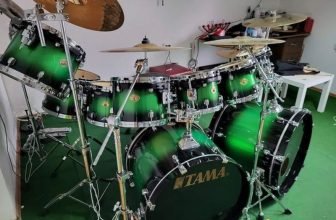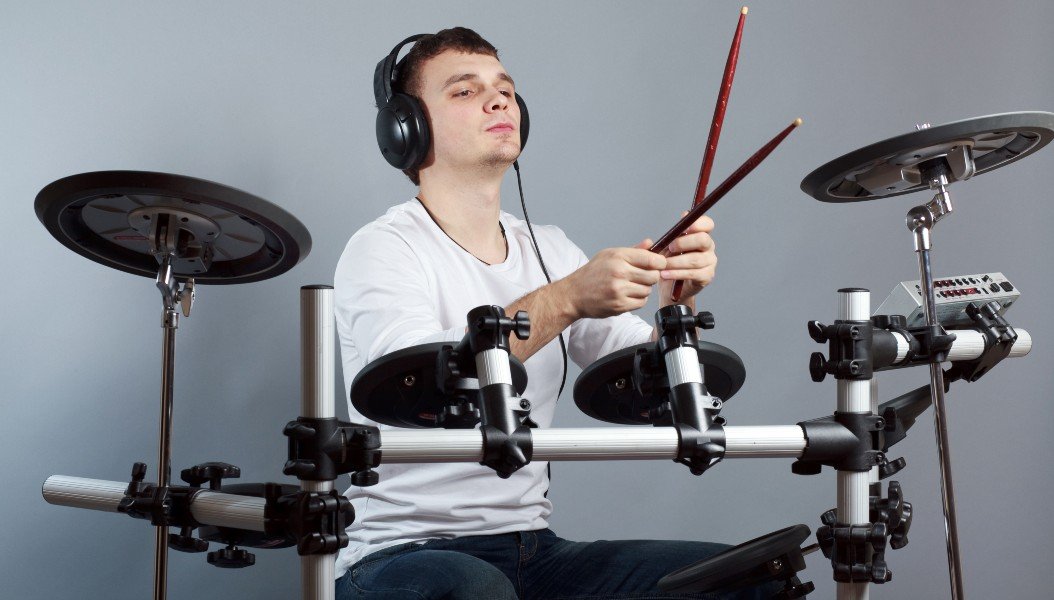
While there’s definitely no problem with hearing yourself playing the acoustic drums, headphones are the second thing necessary for a drummer (after the drums themselves, of course). They are necessary for hearing the rest of the band at a gig, or a backing track, or, finally, the metronome. And yet another job they do is protecting the drummer’s ears from the avalanche of sound they’re surrounded by.
But how does one choose the best headphones for drummers? While most reviews will offer you mostly models by well-known manufacturers, equally great for gigs, studios, or just listening to the music, here I decided to take a different approach. So, prepare to meet some probably unfamiliar names which you’ll still like. And our top pick – OneOdio PRO-10-RED-IN – is far from the most obscure of them. Others, though, are worth your attention too as well as worth their price (which, as I decided, also matters).
So, the journey will take you far away from everyone’s favorite Japanese, German, or Austrian brands. Instead, you may discover some new names among the best drumming headphones and hopefully get satisfied with them. Hit the skin, let’s begin!
Table could not be displayed.Five Best Headphones for Drummers: Big, Loud, Protective
Contents
When speaking of these, I must warn that none of these models is advertised as specific drum headphones. On the other hand, are there any at all? So they are made either for generic or for other specific purposes. But nevertheless.
1. OneOdio PRO-10-RED-IN – The TOP Pick
No products found.
OneOdio, a Chinese manufacturer that’s been around for about a decade, has built its name upon making headphones and mics that just do their job. So is PRO-10-RED-IN (oh, what a rudiment of a name – kick-tom-snare-crash, all with hi-hats!), the headphone I’d recommend.
It’s a pair of strong-built over-ear headphones which sit well on the head. They are designed and advertised as DJ gear, and the hint of it is in vinyl-like plates on the cups. But drummers can benefit from this design too. Heavy and juicy on the bass, they provide excellent isolation (DJs need that just as much), as well as single-sided monitoring. Though usually, the latter isn’t of much use for a drummer, it’s always convenient to move just one cup to hear the band with one ear and the surrounding sounds – like the vocalist saying something to you off the mic.
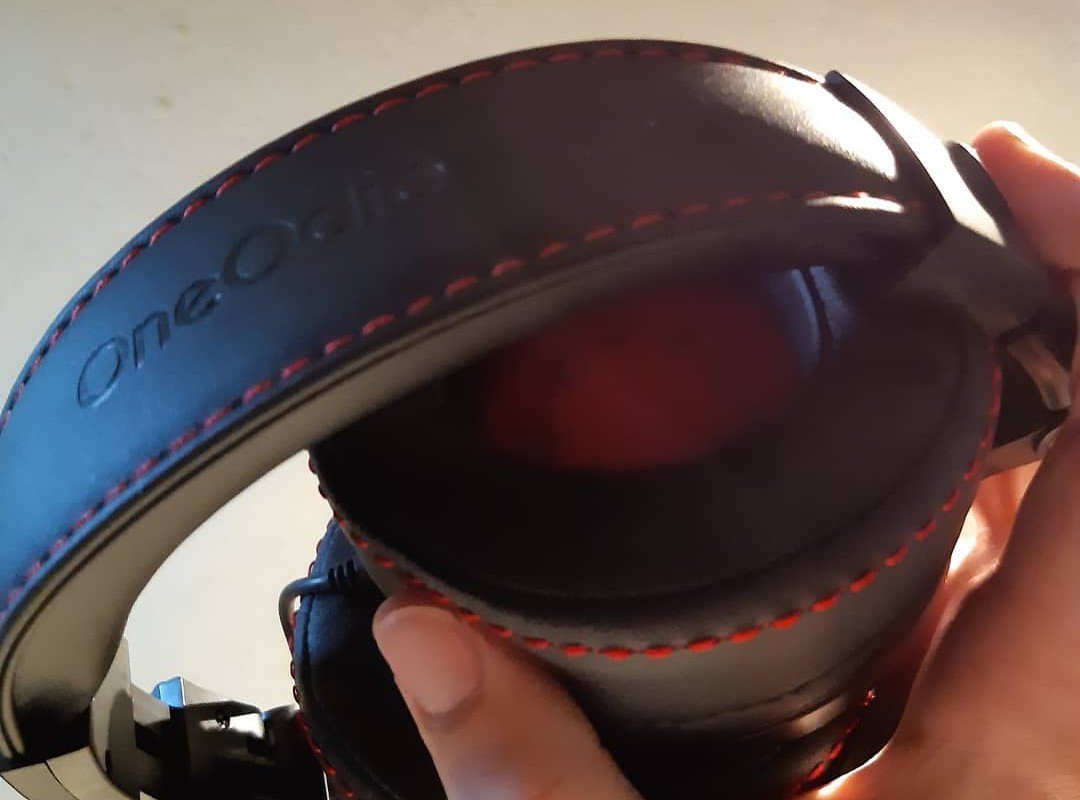
Responsible for the sound quality and force are 50-mm neodymium drivers which provide a surprisingly decent overall sound (especially given the price of $35). The most original solution is to put both 1/4″ and 1/8” inputs on different cups, so any audio cable will do so with any preamp or mixer. Frankly speaking, I have tested just two or three models of the entire variety of them by OneOdio. But the others were more expensive, though still well under $100, and there wasn’t any difference from the drummer’s perspective.
- Excellent isolation;
- Good sound quality;
- Double input port;
- Solid build;
- Affordable price.
- The design is too DJ.
2. Pollini TP 19 – Runner-Up
No products found.
Wait… what? A wireless model? What about the latency that’s been its curse since its inception? Relax. While this model by Pollini does have Bluetooth connectivity, it also has a cable. And that’s the reason it could end up on this list. The reason why it did, though, is the good isolation it provides. The cups close the ears tightly, letting no sound leak from the outside. The closed construction which is the default for this category helps a lot.
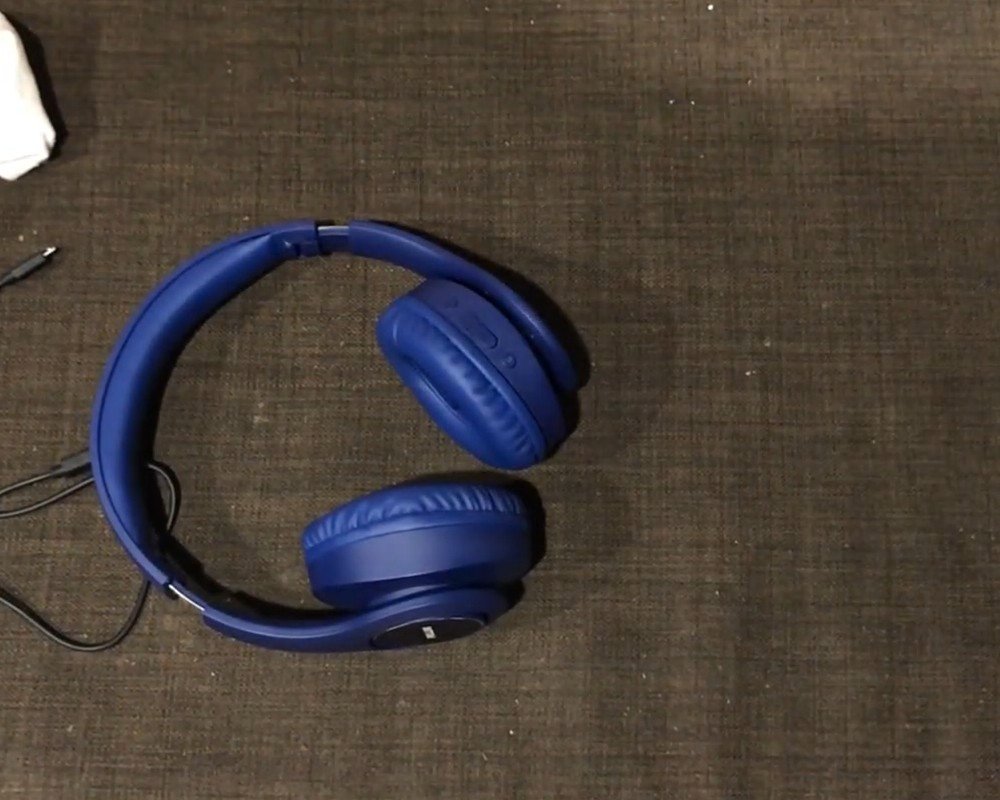
As for the sound quality, it’s just what you might expect for this price. The driver is 40 mm, and the output may lack some force (which is defined by the Bluetooth use case). But as you play with your band, you’ll hear all the instruments and the vocals clearly, as well as prerecorded tracks or metronomes. It lacks the versatility of the model by OneOdio in terms of wired connectivity, so you may need an adapter or another cable with it, as the native cable is the standard 1/8-1/8”.
The price is among the greatest pros of these headphones. For under $40, you can use these headphones at your gigs or sessions and use them for just listening in the street in between.
- Surprisingly decent build;
- Good isolation;
- Decent sound on the cable;
- Pro 4;
- Very affordable.
- Slightly heavy;
- Bluetooth is no necessity for this job.
3. Audio-Technica ATH-M50X – Premium Pick
No products found.
The most acclaimed manufacturer on our list, Audio-Technica was founded by a Japanese entrepreneur Hideo Matsushita (not to be confused with Kōnosuke Matsushita of Panasonic). What we refer to as “Japanese quality” is still maintained by Audio-Technica, and here is an example. These professional-class monitor headphones are great for gigs, listening, and – what they were developed for – monitoring at the studio.

And this grants what we’re here for – isolation. What’s good for record booths is just as good for stages, and these headphones excel at both protecting your ears from acoustic tsunamis and delivering the precise signal that comes to the concert mixer. The detachable cable is great for the cases you kill it on the drums, so ripping it out won’t destroy the headphones, but usually, it’s durable enough to stop worrying and just keep playing. I’d recommend using the coiled cable of the three the headphones come with.
The price? Yes, it’s expectedly the highest on our list, nearly reaching $200. But the result is worth it. Along with a rich kit that also includes a carrying bag, the thing boasts premium materials and comfortable weight, so you just stop noticing it’s there.
- Highest build quality;
- Perfect studio-level isolation;
- Decent sound;
- Three detachable cables;
- Extremely comfortable;
- Come in various colors.
- Quite expensive;
- Too monitoring for casual listening.
4. ZIHNIC Over-Ear Bluetooth Headphones – Great Value
No products found.
Yes, these have a cable too, so Bluetooth shouldn’t make you feel like “whaaat?” These ones are even cheaper than the model by Pollini, so you might expect just mediocre sound quality and smartphone-oriented Beats-like bass sound. As we’re only interested in the wired mode, I didn’t compare the sound via Bluetooth, so all I can say is it’s not as crappy as you might imagine. The cable, though, does improve it to quite tolerable. The built-in mic is indeed poor, but… do you care?
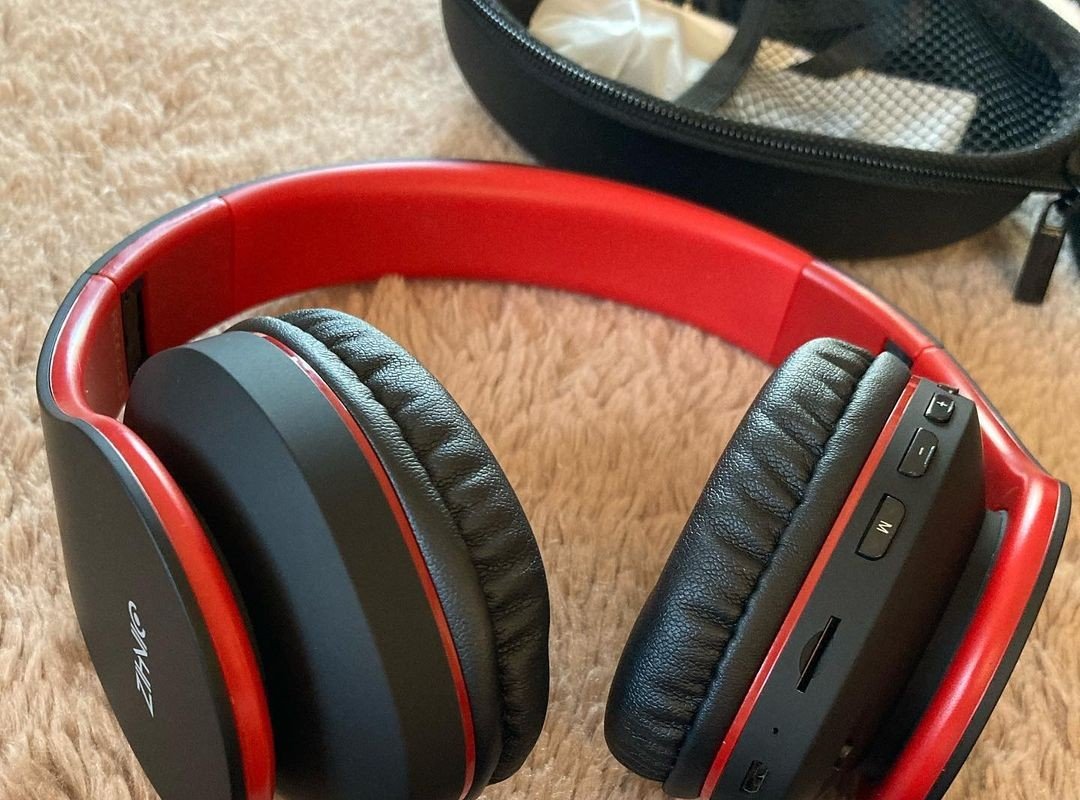
Indeed, these are even lighter and feel better on the head than Pollini. The best thing about ZIHNIC headphones from the drummer’s perspective is good isolation. They may not live up to the studio experience by Audio-Technica, which results in bleeding out, but their cups are big and tight enough to protect your ears from the sounds breaking in. The earmuffs are made of memory-protein foam and sit quite well and comfortably.
Some say that these suffer from terrible delays in Bluetooth mode. They may, given their price and unknown manufacturer. But as we view them as noise canceling headphones for drummers, connect the cable and just don’t care.
- Surprisingly good protection;
- Comfortable;
- Can be used as casual headphones;
- The most affordable amongst others.
- The overall sound is not brilliant;
- The sound bleeds out.
5. LyxPro HAS-10 – The Old-School Impression
No products found.
Professional studio monitor headphones for under $40? This must be an exaggeration, especially given that the brand is indeed Chinese, despite its American office in NJ. But still, for our purpose, these headphones perform quite impressively. The undeniable pros of these are genuinely good sound isolation achieved through well-designed cups, earmuff materials, and weight balance, so they don’t slip off.
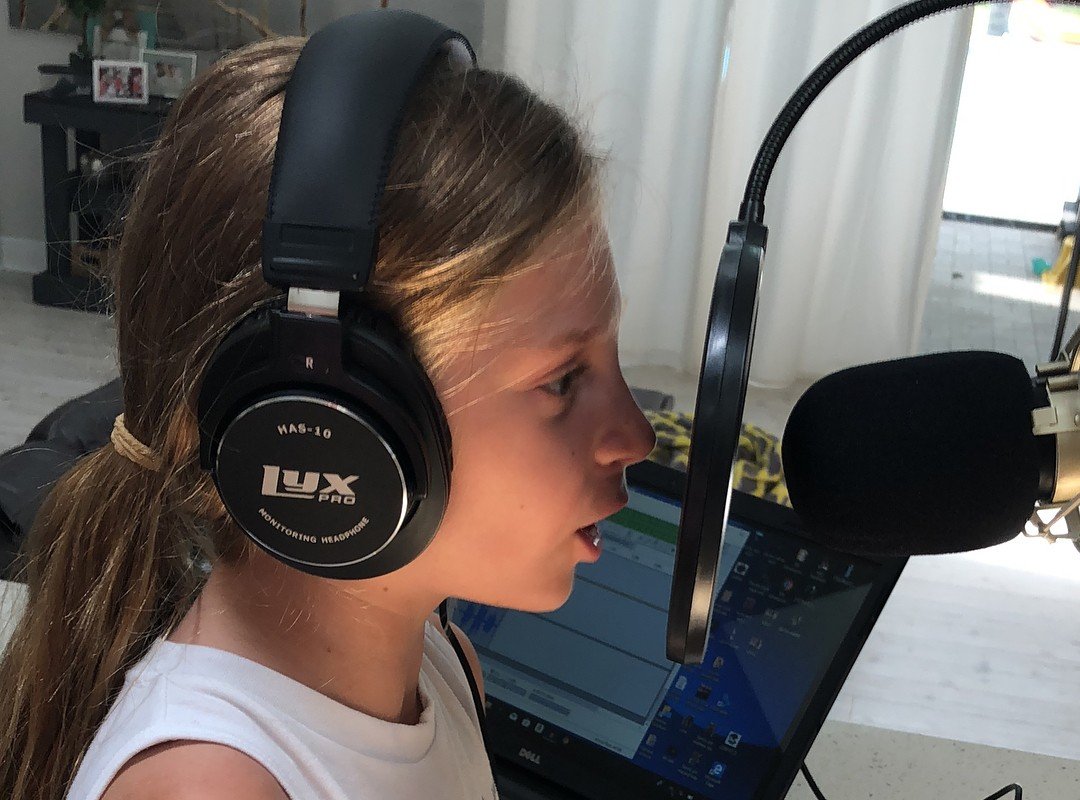
The cable, again, is detachable, and the default one is coiled. It’s just 1/8-1/8”, so you’ll probably need an adapter or another cable. But you may still like the original one for being coiled on one side, so you can connect it either way. Or replace it with your own with 1/4″ on one end if you’re not into adapters, but usually it’s no issue.
They have surprisingly many features I like, from their range (10-26,000 Hz, not sure your ears can hear all these highs and lows) to their comfortable design. The biggest selling point of these headphones, though, is their distinct 1980s feel. Big, black, and solid, they make you reminisce of either Guns N’Roses or Kool & The Gang (or DJ Jazzy Jeff if you wish).
- Good isolation (you see, they all need it);
- Comfortable pads;
- Very wide range supported;
- Old-school look.
- May seem too bass-heavy.
Buyers’ Guide on Headphones for Drummers
After reading all these reviews, you may decide on some of these or try to look for something different. But what should you look for in headphones for drumming? Let’s choose the main points.
How to choose the best drumming headphones for you
As for me, I’d point out the following parameters to choose the headphones for drumming sessions.
- Isolation. Don’t care too much about what’s leaking out. The isolation headphones for drummers should provide work the other way round. So If someone near you hears what you’re listening to, it’s no issue. The issue is you hear them talking next to you through the cups.
- Build quality. Given how much physical energy you splash out while beating the dust out of the skins, you need something really sturdy.
- Comfort. You’re going to spend hours with these headphones on. So try them and make sure they won’t cause pain or discomfort too soon.
- Sound quality. Not that you need to enjoy the scene and the detail, but neither should they be simply poor.
Types of headphones drummers use
The best drumming headphones are, traditionally, over-ear types. As you see, all the five models in my selection are these. But there are advocates of in-ear models too. So, let’s take a closer look.
- Closed-back over-ear headphones: These headphones provide the best sound isolation, which is important for drummers because it helps to block out the loud sound of the drums and protect their hearing. They also typically have a comfortable over-ear design that can be worn for long periods of time.
- In-ear monitors (IEMs): IEMs are small headphones that are inserted directly into the ear canal. They provide excellent sound isolation and a more immersive listening experience than over-ear headphones. However, they can be uncomfortable for some people to wear for long periods of time.
- Isolation headphones: These headphones are specifically designed to provide maximum sound isolation. They are often used by drummers who play in loud environments, such as recording studios or live concerts.
- Wireless headphones: Wireless headphones are becoming increasingly popular for drummers because they offer the freedom to move around without being tethered to a cable. However, they can be more expensive than wired headphones and may have a shorter battery life.
Other types of headphones simply don’t qualify as those for drummers, as they cannot protect the ear like you want them to. We’re not speaking of earplugs which are also widely used. While they do reduce the sound level to acceptable, they don’t connect you with the rest of the band. Not that I forget about them, but it’s a talk in its own right.
FAQ
There are some questions not related to headphone models directly. But leaving them unanswered won’t be right, so I decided to address them here.
Do most drummers go deaf?
Not most, but many. For example, Lars Ulrich of Metallica confesses he’s been suffering from this for a while. Another victim of this problem is Phil Collins who’s been the drummer of Genesis and didn’t drop the sticks even after becoming the band’s vocalist. Many drummers also complain about their hearing worsening, but not to that extent. The possibility always exists, so better safe than sorry.
What do drummers listen to in their headphones?
AS a drummer rarely plays solo but rather with a band, they need to hear the rest of the band in real-time. That’s why they need a fast response (and why Bluetooth be ditched). Also, sometimes there’s a need for a metronome or for backing tracks. As for those playing electronic drums, they also need headphones to hear themselves playing. The acoustic sound of playing e-drums has little to do with the output that matters.
Should you wear headphones when playing drums?
Yes, it’s highly recommended. The main purposes of the drummer headset are to protect the ears from too much pressure and to let them hear the other musicians. Of course, first training can go without them, for you to embrace the sound immediately through the air.
The Conclusion
As headphones both provide the drummer’s hearing and contact with the other band members, they are crucial tools. Choosing your perfect pair may take you a little while, but there are many first-rate models that you can purchase cheaper than you might expect. While I stand for OneOdio, there are others also worth a shot, like, say, LyxPro. And many others, in case you find the pair that fits among them.
And what is your favorite model and/or brand? Which headphones did you like the most for drumming? Let’s drop some names in the comments if you please; let’s have a session!

